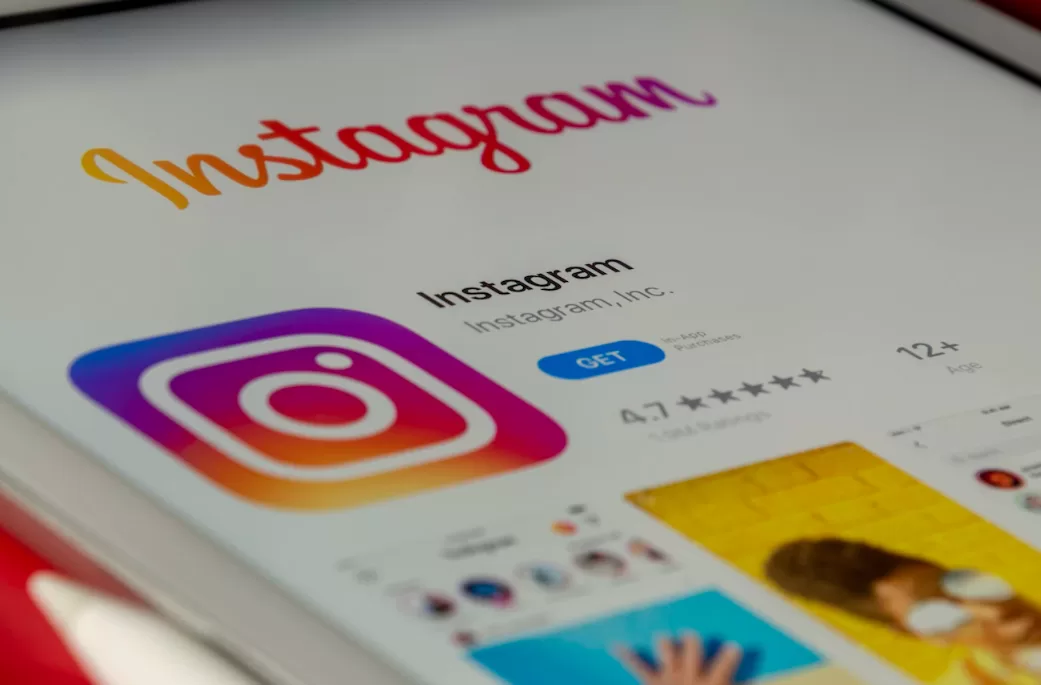Some things aren’t meant to stand the test of time — especially when it comes to marketing. Ephemeral content may be fleeting, but it has proven quite capable of generating buzz for savvy marketers.
This article will define ephemeral content and discuss its benefits. It will also list a few challenges marketers face and share proven strategies to make ephemeral content work for your business.
Ephemeral Content: A Definition

Ephemeral content includes text, videos, and rich media designed to disappear within a set period, such as a day. Once the time limit expires, the content can’t be retrieved. It’s simply gone.
You can find ephemeral content on many social media platforms, including Snapchat, Instagram, Facebook, and WhatsApp. All four have options for ephemeral content built into their platforms.
Snapchat runs almost entirely on ephemeral content. Consumers can share photos or videos with selected friends or followers. These posts disappear once the recipients view them twice or within 24 hours (whichever comes first).
Users can also create social media stories that appear on their profiles. These stories are viewable to the public or to the user’s following, depending on the user’s privacy settings.
Both Facebook and Instagram combine evergreen and ephemeral content. On Instagram, users can share photos or videos through their regular feeds. They can also create social media stories that appear on their profile for 24 hours until expiration.
Facebook follows a similar strategy. However, Facebook also allows text-only posts on a user’s feed — an option that isn’t available through Instagram.
Users who want to save their stories to their profiles can do so through Instagram and Facebook. Keeping an ephemeral story will make it permanently available on the user’s social media profile (at least until they decide to delete it).
WhatsApp is primarily a messaging tool, but it includes options for ephemeral content. Users can create disappearing messages, which can’t be read after a specific time, such as 24 hours, a week, or 90 days. They can also create short videos that appear on their profile, much like a social media story.
Since ephemeral content is time-sensitive, followers who enjoy a user’s stories or messages won’t want to miss out on a new post. Marketers can use ephemeral options to share unique posts that compel their audience to keep following.
The Benefits of Ephemeral Content
Ephemeral content goes against everything marketers learn about SEO. Instead of focusing solely on articles, blogs, or videos designed to rank in the search engines over the long term, marketers can also create ephemeral posts that will disappear quickly.
This content won’t appear in search engine results, and if a user doesn’t check their social media accounts within the set time frame, they’ll miss it altogether.
While the short-term nature of ephemeral content may be discouraging on its face, marketers should be aware of some of the key benefits of this type of marketing.
1. Generation Z and Millennials Love Ephemeral Content
Is your audience made up of millennials and Gen Z consumers? If so, you’ll want to include ephemeral content in your social media marketing strategies. According to Increditools, nearly 70% of viewers who watch Instagram stories are part of Generation Z. The remaining viewers are primarily millennials.
Generation Z and younger millennials grew up with ephemeral content. It first became popular when Snapchat came into existence in 2011. Between 2011 and 2018, the concept quickly gained popularity until major social media players like Instagram and Facebook added ephemeral content features to their platforms.
During the 2011 to 2018 time period, millennials and Generation Z flocked to Snapchat, making it the second most popular social media app among their age group. These longtime ephemeral content consumers understand how it works, and they want to see more of it from their favorite brands and companies.
While Snapchat may be less popular today, it still has a dedicated user base. Generation Z and millennials often use both Snapchat and Instagram to view ephemeral content they don’t want to miss.
2. It Can Elicit FOMO From Your Audience
FOMO is the fear of missing out. Since ephemeral content is viewable for only a short timeframe, people who don’t see the post won’t know what happened. They’ll miss out on information their friends or colleagues may be discussing.
Fear of missing out is a powerful motivator. No one wants to be left out of the action, clueless about something everyone else experienced and continues to talk about.
Marketers can capitalize on FOMO by creating ephemeral content. Regularly sharing short-lived posts that are memorable and create buzz encourages your followers to check your stories and come back whenever you post something new.
3. It Boosts Audience Engagement With Your Brand
A regular post on social media will usually attract likes and comments. If the post is particularly interesting, people may share it with their followers. Companies that create the post can respond to comments, increasing engagement with the post. However, regular posts don’t have quite the same engagement features that a story provides.
Social media stories encourage further engagement by using elements like polls and questions and answers. Companies can also inquire about the followers’ opinions on a topic. Through the story, viewers can respond to the content by participating in the poll, asking questions, or leaving short comments.
Another feature of some ephemeral content is live streaming. Users can share content in real-time, and people can join their stream to see what’s happening. Live streaming is helpful for major events, like product launches, or for when you have big news you can’t wait to share.
Sometimes, social media platforms allow users to tag others or share a specific location in their ephemeral content. Tagging notifies other users that they are mentioned in the post, and they may share it with their followers, too.
4. You Can Expand Your Audience Reach
Brands are always looking for ways to attract new customers, and ephemeral content is a great way to do so, particularly on Instagram, Facebook, and Snapchat.
Ephemeral content is almost always shared publicly unless the user sets specific privacy limits. If a story captures a lot of attention, it may rise to the top of the social media platform’s explore feed and automatically appear in some users’ feeds, even if they aren’t direct followers.
Unlike social media ads, companies don’t need to pay money for their ephemeral content. If an ephemeral post goes viral, as many do, it can reach hundreds or thousands of people without the company having to spend a dime.
This feature makes stories attractive to companies with strict advertising budgets. Instead of using the paid ads option, they can create compelling ephemeral content and hope it takes off.
Some platforms, like Instagram and Facebook, automatically add social media stories to their public algorithms. People who tap the Explore option on Instagram may find your ephemeral content. If they enjoy watching the video, they may follow you. This helps you gradually build an audience within the platform.
5. You Will Develop Stronger Connections With Your Audience
One of the most difficult challenges brands face is forming close relationships with their audience. The nature of a company is to make a sale, not become a consumer’s best friend. However, businesses that can develop bonds with their customers are likely to see higher levels of retention.
If a client feels like the brand truly cares about them and offers products or services they can’t find anywhere else, they’ll return to that brand when they need to make a purchase.
Social media is one of the best ways to develop client relationships, particularly through ephemeral content. Since the features of ephemeral content are more conducive to audience engagement, you’ll likely see greater responses than you would through simple posts.
For example, consider X, the social media platform previously known as Twitter. The company owner, Elon Musk, frequently posts polls asking for feedback on potential new features. He’s asked for help creating a new logo for the company and designing color schemes. His polls often attract thousands of comments and votes, not to mention news coverage. They help to solidify his following on the platform.
6. There’s No Need for Perfection
One of the top benefits of ephemeral content is its rawness. Viewers don’t expect carefully curated and scripted social media stories.
In fact, the more “real” your content appears, the more likely viewers are to resonate with it. People appreciate when brands don’t go the extra mile to sell them on something. They want to see what’s going on behind the scenes.
You can use the organic quality of an ephemeral post to share a few moments in your company’s office or showcase the CEO hard at work on a new project. If you own a restaurant, share a few clips of your chef preparing one of your top meals.
There are so many ways to use ephemeral content. It’s truly one of the most flexible options available for advertising your business.
Consider some of the ephemeral posts that have gone viral recently. For instance, Nike is known for introducing its newest sneakers via Instagram stories. Usually, it will drop a new story whenever it debuts a brand-new shoe — it’s a great way for Nike to share its latest kicks with followers.
Some of these stories can attract millions of views simply because Nike has a large global audience who loves its products. However, Nike doesn’t script its stories; there isn’t much production involved. Instead, the product launch may be as simple as someone wearing the newest pair of sneakers.
The Drawbacks of Ephemeral Content

While ephemeral content certainly has lots of advantages, it’s not perfect. Not every brand will benefit from creating social media posts that disappear. Here are some of the drawbacks to be aware of.
1. People Will Quickly Forget About Your Posts
Due to its short-term nature, ephemeral content is often forgettable. Once the user has viewed the story once or twice, they usually can’t see it again. If your message isn’t compelling and fades into the background of millions of other social media stories, you may find that people quickly forget about your brand.
For that reason, it’s best not to rely on ephemeral posts for important information you want people to know about your company. For example, you wouldn’t use an ephemeral post to share your organization’s phone number or address. Those are evergreen details that should stay accessible to anyone who wants them.
To make the most of your ephemeral content, you’ll probably need to keep up with a strict posting schedule. You may need to make daily posts to keep your audience engaged. That can be pretty time-consuming, particularly if you have limited marketing resources.
Of course, you can save ephemeral content on some platforms. If you have a great Instagram story you want people to be able to view for longer than 24 hours, you can save it as a highlight on your profile. It will be viewable to anyone who pulls it up. However, you may not see quite as much engagement with it since it’s no longer new.
2. Ephemeral Content Is Available Only on Social Media
Currently, only social media platforms host ephemeral content. You can’t create ephemeral content for blog posts, whitepapers, or other forms of marketing. These are meant for long-term consumption, meaning they will be visible on your website and through search engine results until you delete them.
While you could technically post a blog one day and delete it the next, that’s usually not a good idea. Blogs tend to attract more attention over time as they build up backlinks and increase in the rankings. If you post and delete a blog immediately, it will never gain traction. You could share it with people via email, but it will be gone unless they take action quickly.
Some companies find that social media isn’t the right place to advertise their products or services. They may have an account but few followers, so creating ephemeral posts isn’t likely to result in much of a return.
For instance, a podiatrist probably wouldn’t want to create ephemeral social media posts. While their work can help people suffering from foot conditions, viewers probably won’t want to see pictures of toe fungus or bunions clogging their Instagram feeds.
Additionally, podiatrists must adhere to special regulations, like HIPAA, which require them to pay strict attention to their clients’ privacy. They have to be very careful about what they post on social media — if they have accounts at all.
3. You’ll Need to Create a Long-Term Strategy
If you plan to use ephemeral content as a pillar for advertising your business, you’ll need a long-term strategy, just as you do with other types of marketing campaigns. That can drain your resources considerably, especially if you have a limited budget and few in-house employees who can work on it.
Most companies find that they need to keep up with their ephemeral posts throughout the week. Otherwise, interest in their content will dry up, and their stories won’t rank as highly in social media algorithms. You’ll need to be ready to create ongoing posts and have lots of content to fill them.
While ephemeral content doesn’t require as much planning as a traditional commercial, paid ad, or written article, that doesn’t mean you can post whatever comes to mind. If your content doesn’t continually engage your followers, they’ll stop viewing your stories and may unfollow your company. No one wants to spend their limited time on things that bore them.
Best Practices for Creating Ephemeral Content

If you’ve decided that ephemeral content is suitable for your brand, plan to follow these best practices.
1. Define Your Objectives and Establish a Plan
What are you hoping to get out of your ephemeral content? Do you want to generate brand awareness, or are you hoping for conversions, like sign-ups to your email newsletter? Are you trying to increase your sales?
Once you understand your goals, you can decide on the types of posts that can help you achieve them.
For example, if you’re aiming for sales, you might use your ephemeral posts to notify your followers of daily discounts on individual items in your e-commerce store. As people become aware of what you offer, they’ll follow you and regularly view your stories to see if there are any sales on things they need.
You’ll also need to decide on a posting schedule. Are you okay with daily posts, or is a weekly share more reasonable? Upgrading your frequency will likely attract more followers, but you may also tire yourself out. Coming up with something new every day isn’t easy.
2. Make Your Content Engaging
While most ephemeral content isn’t scripted, you’ll want to define the purpose of the post and its message. Random ephemeral content that doesn’t deliver value isn’t likely to attract much attention.
Think about what you want your followers to learn from your post. For instance, if you want to show off your employees as they work on a big project, make a “behind the scenes” post. It might intrigue future applicants who are interested in working for your company. If you plan on hiring soon, this would be a fantastic way to notify your audience of coming roles.
Decide on the length of your post and how you’ll fill the time. It’s best not to separate random clips that don’t follow a set structure. Instead, turn them into a cohesive story.
3. Decide Whether You’ll Use Tags
Tags can help you widen your audience and potentially reach people who don’t actually follow your brand. Anyone searching for the tag may come across your post, and this can help you grow your follower base. You might use hashtags — short phrases preceded by the hashtag symbol — to increase the size of your audience.
You can also use tags to call out other people, locations, or brands. For instance, if your content includes several different people, you might include their handles so the post appears to their followers. Similarly, if you collaborate with another brand on your post, it’s good form to tag them in the final product.
4. Keep It Real
Ephemeral content isn’t meant to be splashy and commercialized. While you can edit it and include a filter to make it more visually appealing, you don’t need to go overboard. Remember that your post will only be visible for a short period, and you’re probably not going to reuse it. There’s no need to break the bank for its production.
Make sure your content reflects your brand’s values and messaging. It should be consistent with other types of content that you create.
For example, if you own a hairstyling company, you probably wouldn’t post ephemeral content about a nearby auto show. It wouldn’t reflect what your company offers. Instead, you could post before-and-after shots of your clients, recommendations for hair products, and notices of upcoming events or sales.
The more you remain true to your company, the more likely it is that people will enjoy your posts. When you embrace your authenticity, you’ll begin to see the engagement you’re looking for.
Ephemeral Content Can Improve Brand Awareness
While ephemeral content has benefits and drawbacks, one thing is certain — it can help you share your brand with the world. Fun and engaging ephemeral posts are easy to digest, and people enjoy watching them, even if the story isn’t available forever.
Additionally, great ephemeral posts have the potential to go viral, attracting thousands of viewers who were previously unfamiliar with your company.
If you’re considering ephemeral content for your brand, start by defining your objectives and strategy. Once you have a plan, you can develop temporary posts that keep your audience enthralled.

